ChatGPT Unleashed: Pros, Cons, and Marketing Potential
2024-04-16

Gone are the days when digital marketing relied heavily on manual processes and human analysis. Today's marketing landscape is marked by a fundamental change: the integration of AI.
Before the introduction of AI, marketers would manually gather information from numerous channels and thoroughly analyze the data to find trends and insights that might guide the way they approach marketing. It took a lot of time, and the insights it produced could often be wrong or insufficient.
The rise of AI in digital marketing has reshaped the ways marketers gather, analyze, and use data. AI-powered tools and platforms can analyze vast amounts of data from many sources in seconds, discover patterns, trends, and insights, and automate various marketing operations.
Through the years, AI has gained trust from marketers and even became a must-have. This shift has given rise to the conversational AI. Conversational AI, often known as chatbot technology or virtual assistants, is a subfield of artificial intelligence that focuses on enabling robots have natural and human-like conversations with people. This technology use powerful natural language processing and machine learning algorithms to interpret and respond to user inquiries, requests, and interactions in a manner that replicates human conversation.
Conversational AI has breathed new life into customer engagement, lead generation, data analysis, and problem-solving activities. It has a wide range of applications in terms of marketing, including customer service, product development, sales, marketing, financial services, education and even personal productivity.
At the forefront of this conversational marketing revolution stands ChatGPT. This cutting-edge solution holds the potential to redefine the way businesses engage with their customers. Let’s explore the limitless possibilities that Chat GPT brings to the table.
About ChatGPT
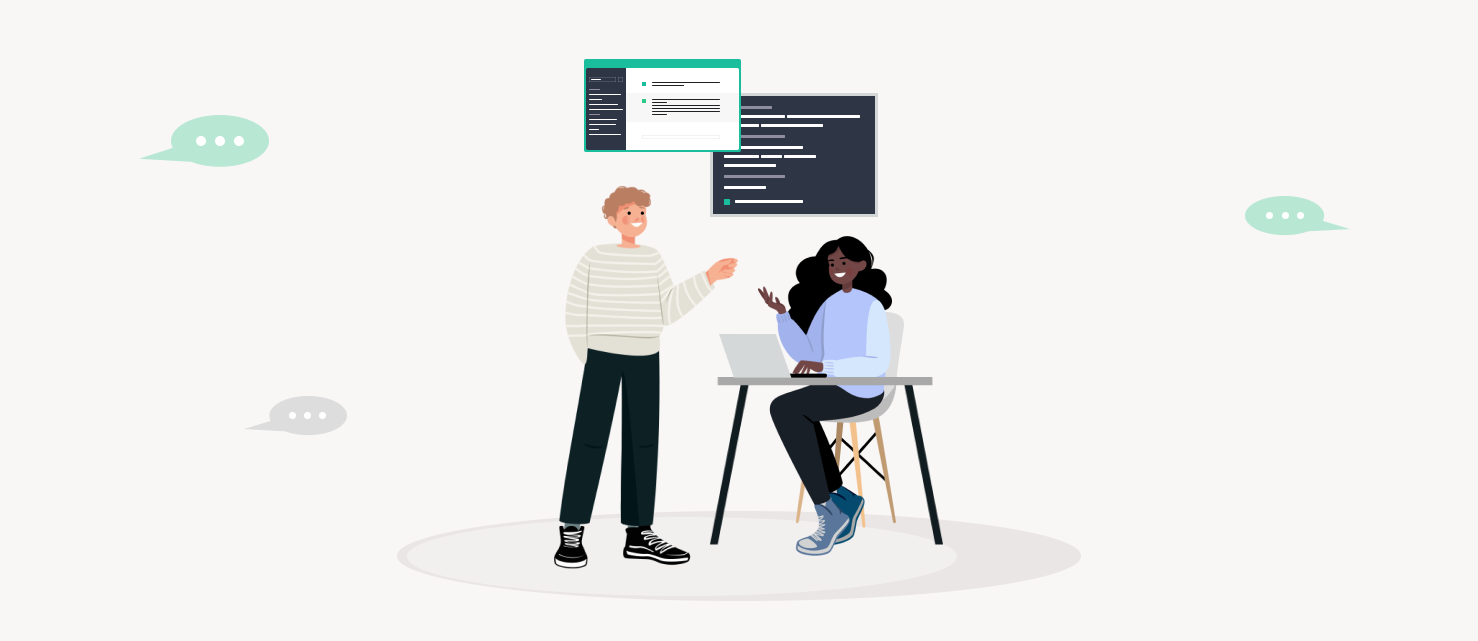
ChatGPT, which stands for Chat Generated Pre-Trained Transformer, is an advanced AI language model developed by OpenAI. It was trained using reinforcement learning from human feedback to follow an instruction in a prompt and provide a detailed response.
At its core, ChatGPT uses an advanced language model to create text that reads as if it was created by a human.
ChatGPT is more powerful and more human than any of the chatbots that came before. It can understand intent better than chatbots of the past, as it collects data nonstop from a vast amount of text data on the internet, including books, articles, and websites.
Using ChatGPT for marketing purposes unlocks numerous benefits that boost operational efficiency. This innovative technology goes beyond conventional methods, providing a number of advantages that transform the marketing environment, such as:
- Efficiency and time savings
Marketers can swiftly generate content, draft email campaigns, and even respond to customer inquiries without spending excessive time on manual tasks. This efficiency empowers them to focus on strategic planning and creativity.
- Consistent messaging
Surprisingly, maintaining a consistent brand voice across diverse content platforms can truly be effortless. Assigning a specific task for ChatGPT, marketers can ensure that every piece of content, whether it's a social media post or an ad copy, aligns seamlessly with the brand's identity and messaging.
- Personalized interactions at scale
Marketers can tailor their promotion with ChatGPT by creating personalized messages, recommendations, and offers based on user preferences and behaviors. This level of personalization nurtures leads and enhances customer loyalty.
- Data-driven insights
ChatGPT's AI capabilities enable it to continuously learn from new interactions, ensuring its responses become more refined and contextually accurate over time. This adaptive learning ensures that marketers are equipped with a tool that evolves in tandem with consumer preferences and language trends. This information is a goldmine for improving marketing tactics, foreseeing customer demands, and producing content that appeals to the target market.
- Cost-efficiency
ChatGPT reduces operational costs associated with hiring, training, and maintaining a large marketing team. Remarkably, ChatGPT is available for free, making it an even more compelling solution for marketers aiming to optimize resources without compromising on quality.
ChatGPT limitations
Well, with all the benefits listed, we can conclude that the possibilities of ChatGPT are virtually limitless, and its potential to revolutionize conversational marketing is undeniable. However, there are several limitations and downsides that you must know before relying on ChatGPT. The thing is, it provides information based on training data, and there are risks of information being outdated or misunderstood.
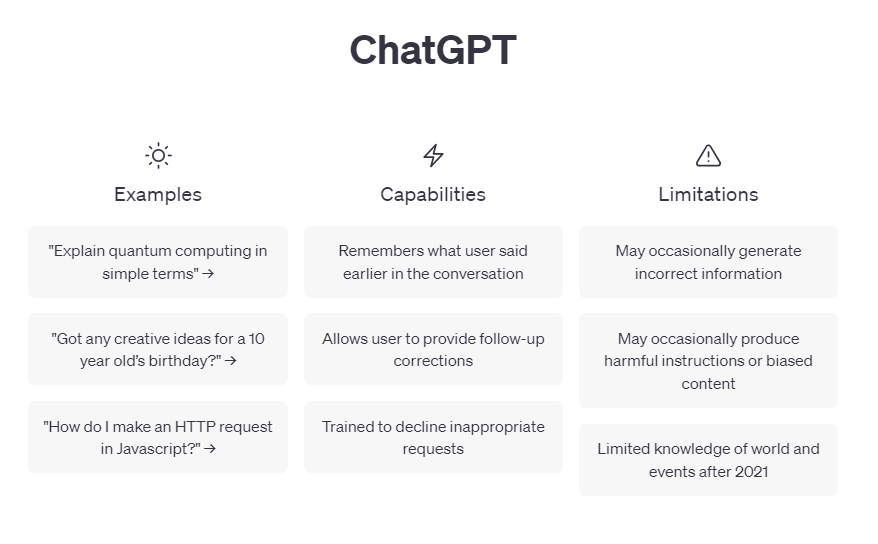
We are providing you with a list of limitations associated with the information ChatGPT provides:
- Outdated information;
- Misinterpretation of context;
- Lack of nuance;
- Subjectivity;
- Unverified information.
Given these limitations, it's always a good idea to use the information ChatGPT provides as a starting point and verify it from reliable sources, especially when it comes to important matters.
Apart from this, there are several downsides to using ChatGPT:
- Loss of authentic client engagement
ChatGPT's responses might lack the human touch that clients appreciate, which might lead to a less personal and relatable interaction with clients. Moreover, ChatGPT might struggle to understand and respond appropriately to complex emotional contexts, potentially leading to insensitive or inadequate replies. Train ChatGPT with your specific communication styles, brand language, and empathy-driven responses to better align with your business's personality.
- Operational glitches affecting business
Technical glitches could disrupt your operations, causing customer inconvenience and potentially harming your brand's reputation. Relying heavily on a third-party service like ChatGPT can make your business vulnerable. Implement backup systems, monitor performance, and have a contingency plan to switch to manual support during technical issues.
- Privacy and data security concerns
Sharing sensitive information with ChatGPT could raise concerns over privacy and data security if not managed properly. Implement strong data encryption, comply with relevant data protection regulations, and avoid asking or storing sensitive personal information.
All in all, ChatGPT might not excel at creative problem-solving that requires human intuition, experience, and critical thinking. Use ChatGPT to complement, not replace, human interactions. Implement it into your business while ensuring there's always a human touch available.
Prompts
The information or instruction you give ChatGPT as a starting point for generating a response is a prompt. ChatGPT generates them based on a diverse range of text data available on the internet. These might be books, articles, websites, or other texts. It has been trained on a vast amount of topics, including science, history, and current events.

Here are some general examples of how to create prompts based on the type of query:
- Basic query
If you're looking for information about market segmentation, your prompt could be:
Explain the concept of market segmentation and how it helps businesses target their audience effectively. First, provide a definition. Then present how it helps business in a table format.

- Creative writing
To generate a creative piece about a new product launch, you could use a prompt like this:
Write a marketing story about a company launching a groundbreaking new product that revolutionizes the industry.
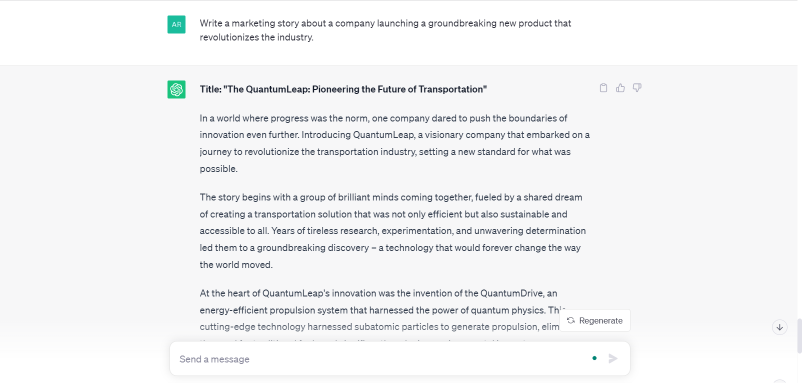
- Code generation
For generating a marketing email template in HTML, your prompt might look like this:
Create an HTML template for a marketing email promoting a limited-time offer on your latest product.
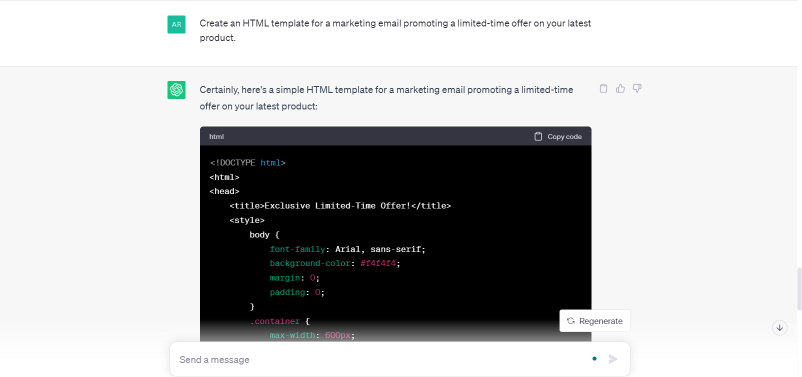
- Translation
If you're looking to translate a marketing slogan from English to Spanish, your prompt could be:
Translate the following marketing slogan to Spanish: "Unleash your potential with our products."

- Dialogue
To have a conversation with a marketing specialist about personalization in marketing, you could use a prompt like this:
Engage in a dialogue with a marketing specialist on the role of personalization in modern marketing, discussing personalized email campaigns, product recommendations, and user experience.

Moreover, you can have a look at some samples provided by OpenAI in their “Introducing ChatGPT” blog article.
So now we clearly understand that crafting effective prompts is crucial for getting the desired output from ChatGPT. Let’s then explore 7 tips to help you create successful prompts:
1. Be precise
It’s crucial to clearly state what you want to achieve or know. The more specific and precise your sentence, the better chance of obtaining accurate and relevant information;
2. Provide context
Context helps to set the stage for your query. If your statement includes relevant background details, ChatGPT will generate responses that are more contextually fitting;
3. Use complete sentences
Write inputs in well-formed, complete sentences. This makes it easier for ChatGPT to understand your intent and generate coherent responses;
4. Ask open-ended questions
Instead of asking yes/no questions, ask questions that encourage elaboration and discussion. This often results in more comprehensive and informative replies;
5. Use prompts as part of a conversation
Building upon previous interactions can help maintain context. You can refer to earlier responses or continue a conversation to receive more relevant answers;
6. Include key details
If your query requires certain specific details, ensure they're included in your request. This ensures a more accurate response;
7. Experiment and iterate
If your initial command doesn't produce the desired outcome, simply rephrase or adjust it. Experimenting with different wording or approaches can lead to improved outcomes.
As you see, if you don’t need a detailed and informative response from ChatGPT tailored to your marketing-related inquiry, you can just write:
“How to create effective content marketing strategy?”
However, there are better ways to express your inquiry:
“Can you provide insights into developing an effective content marketing strategy for a startup? Highlight the importance of audience research, content distribution, and measuring ROI. Present the information in a table format.”
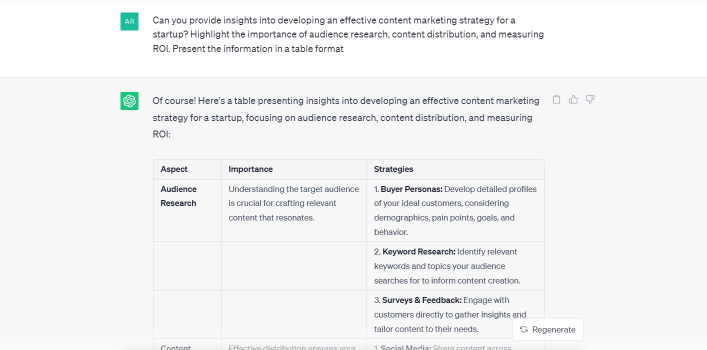
In this example:
> The statement clearly specifies the topic as "developing an effective content marketing strategy for a startup."
> It mentions key elements such as "audience research," "content distribution," and "measuring ROI," which provide context for the type of information requested.
> The command encourages a comprehensive response by requesting insights rather than a simple answer.
> It includes specific aspects that are crucial for the desired information.
The tips listed can significantly improve the chances of getting the desired output from ChatGPT.
And there you have it — an exciting journey through the world of ChatGPT and its game-changing impact on the world of marketing. In this age of AI-powered possibilities, ChatGPT isn't just a tool. It's your co-pilot on the journey to crafting conversations that captivate, resonate, and inspire action. From exploring its capabilities to diving into the art of creating the perfect prompt, we've equipped you with the tools to use ChatGPT's powers effectively. So, go ahead, embrace the possibilities, and let ChatGPT be your guide to marketing success.

